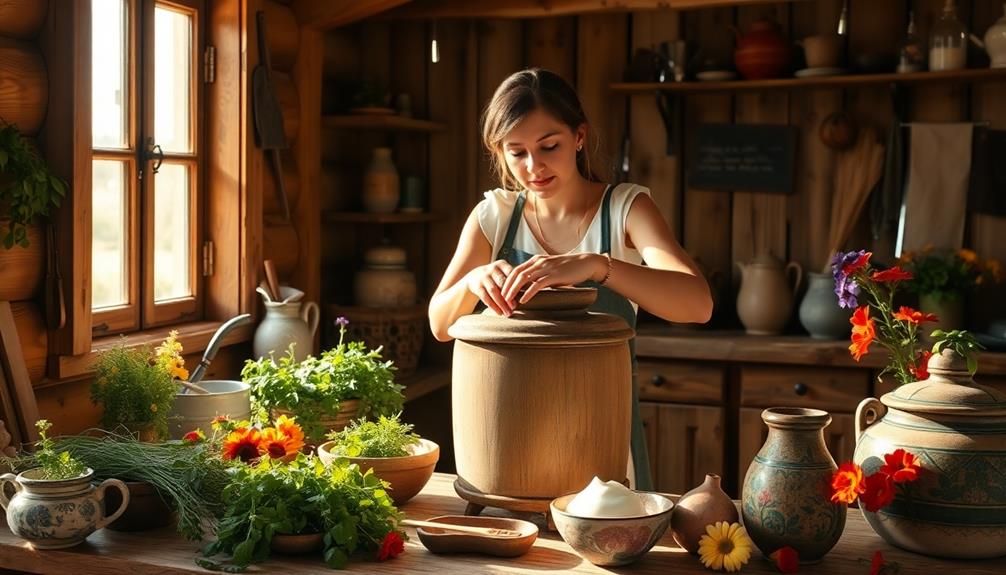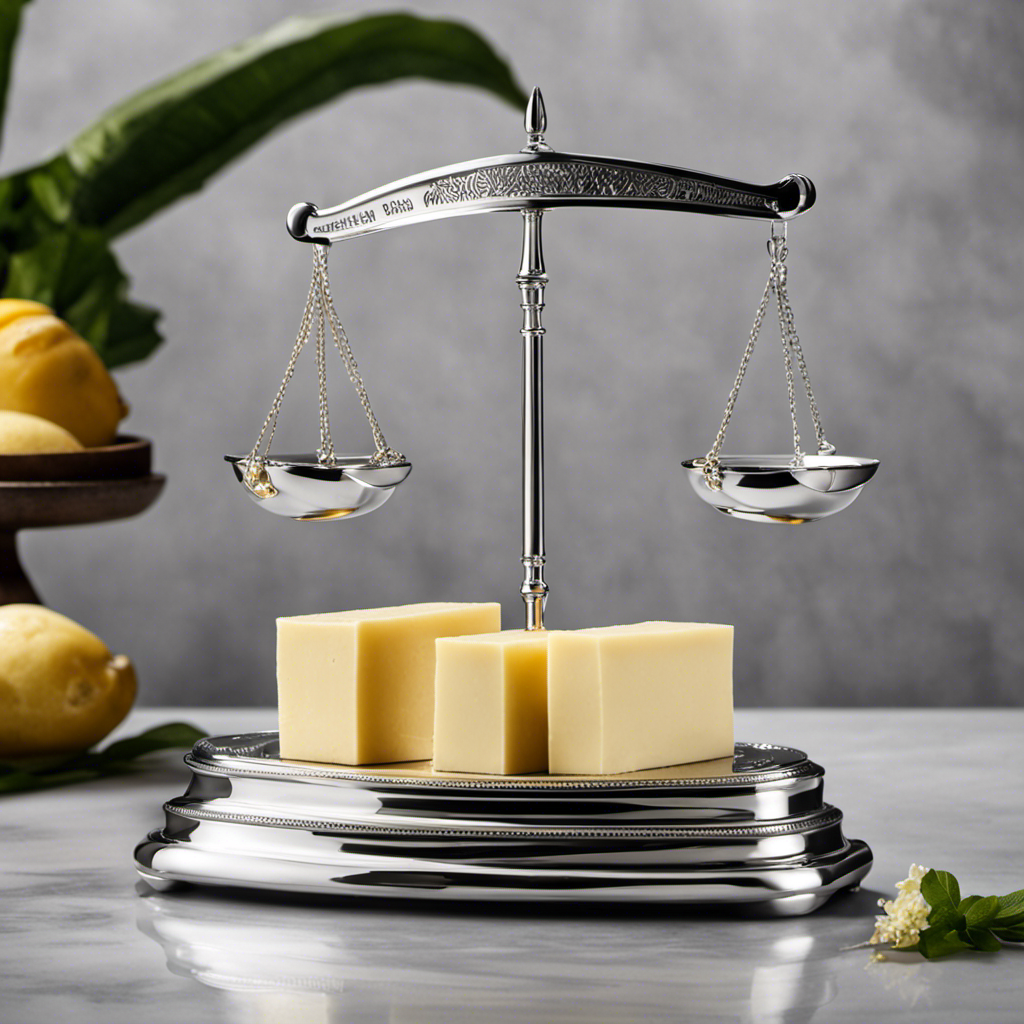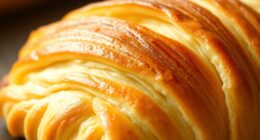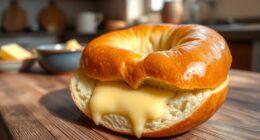So, you’re interested in mastering the skill of producing oil with the magical butter machine, are you? Get ready, because I’m going to guide you through an exciting journey of taste and exploration.
In this article, I’ll be sharing my precise, scientific, and detailed process for creating that golden elixir that will make your taste buds dance with joy.
From choosing the right ingredients to enhancing the aroma, get ready to become a master of oil-making in the magic butter maker.
Let’s get started!
Key Takeaways
- Optimal ingredient ratios and proper infusion are crucial for high-quality oil
- Activate cannabinoids through decarboxylation before adding to the magic butter maker
- Control time and temperature settings for the best results
- Strain the oil and store it properly to maintain freshness and potency
Choosing the Right Ingredients
To make the perfect oil in your magic butter maker, you need to choose the right ingredients. Achieving the optimal ingredient ratios is crucial in obtaining a high-quality oil.
The magic butter maker requires a combination of herbs and oil, and the proportions of these ingredients play a significant role in determining the potency and flavor of the final product.
When it comes to choosing the herbs, it is essential to consider their potency and desired effects. Whether you’re using cannabis, lavender, or any other herb, it is important to find the right balance. The magic butter maker typically requires one cup of herbs per two cups of oil. This ratio ensures that the oil is infused with the herb’s essence without overpowering it.
In addition to the ingredient ratios, the mixing order is of utmost importance. To maximize the extraction process, it is recommended to add the herbs to the magic butter maker first, followed by the oil. This allows the herbs to be evenly distributed throughout the oil, promoting efficient infusion.
Preparing the Magic Butter Maker
Before we begin preparing the Magic Butter Maker, it is important to gather all the required ingredients and equipment. For this recipe, you’ll need a specific amount of cannabis flower, unsalted butter, and water. Additionally, you’ll need a Magic Butter Maker machine, a fine mesh strainer, and a heatproof container for storage.
In the following step-by-step instructions, I’ll guide you through the process of using the Magic Butter Maker to create infused butter. I’ll also provide tips for achieving optimal results, ensuring that your infused butter turns out perfectly every time.
Required Ingredients and Equipment
You’ll need a few essential ingredients and some equipment to make oil in the magic butter maker.
First, let’s talk about the equipment. It’s crucial to choose the right equipment to ensure a successful oil infusion process. The magic butter maker is specifically designed for this purpose, providing precise temperature control and efficient mixing. This machine guarantees optimal extraction and infusion of the desired compounds into the oil.
As for alternative oil infusion methods, there are a few options available. One popular method is the stove-top method using a double boiler setup. This involves using a heatproof container placed over a pot of boiling water to gently heat the oil and ingredients.
Another option is using a slow cooker, which allows for longer infusion times at a consistent temperature. Ultimately, the choice of equipment depends on your preferences and needs.
Step-By-Step Instructions
Now that you have gathered all the necessary ingredients and equipment, it’s time to begin the step-by-step instructions for making infused oil.
To start, it is crucial to activate the cannabinoids in your plant material through decarboxylation techniques. Preheat your oven to 240°F (115°C) and evenly spread your finely ground cannabis on a baking sheet. Bake for 40 minutes, ensuring that you mix it every 10 minutes for even heating.
Next, transfer the decarboxylated cannabis to your Magic Butter Maker, along with your chosen oil. Set the temperature to 160°F (71°C) and run the machine for two hours. Alternatively, you can also use alternative infusion methods such as slow cookers or double boilers.
Once the infusion is complete, strain the oil using a fine mesh strainer or cheesecloth, and store it in airtight containers.
This concludes the step-by-step instructions for making infused oil. Now let’s move on to some tips for optimal results.
Tips for Optimal Results
For the best results, it’s important to strain the infused oil using a fine mesh strainer or cheesecloth to remove any plant material. This ensures a smooth and pure oil without any unwanted debris.
To achieve optimal infusion technique, follow these tips:
- Use high-quality cannabis: Choose fresh, potent buds for the best flavor and potency.
- Grind the cannabis finely: This increases the surface area for better extraction.
- Control temperature and time: Use the recommended temperature and time settings to extract the desired compounds without compromising the oil’s quality.
- Store properly: To maintain freshness and potency, store the infused oil in a cool, dark place, away from direct sunlight and heat sources.
By following these tips, you can create a high-quality infused oil with optimal flavor and potency.
Now, let’s move on to the next step: decarboxylating the cannabis.
Decarboxylating the Cannabis
To properly decarboxylate your cannabis, start by preheating the oven to 245°F. The cannabis decarboxylation process is a crucial step in oil making as it activates the cannabinoids, making them more potent and bioavailable.
Decarboxylation is the process of converting the non-psychoactive acid forms of cannabinoids, such as THCA and CBDA, into their psychoactive counterparts, THC and CBD. This process involves removing a carboxyl group from the molecular structure, which occurs through the application of heat.
To begin, finely grind your cannabis using a grinder. This will ensure even heat distribution and maximize the surface area for decarboxylation. Next, spread the ground cannabis in a single layer on a baking sheet lined with parchment paper. Place the baking sheet in the preheated oven and let the cannabis decarboxylate for approximately 30-40 minutes. It’s essential to monitor the process closely to avoid overheating or burning the cannabis.
During decarboxylation, the cannabinoids undergo a chemical reaction, transforming into their active forms. This activation is essential for oil making, as it ensures that the final product will have the desired therapeutic effects. Without proper decarboxylation, the oil may lack potency and therapeutic benefits.
Therefore, taking the time to decarboxylate your cannabis correctly is crucial in achieving high-quality oil.
Infusing the Oil With Herbs and Spices
Infusing oil with herbs and spices enhances its flavor and adds an aromatic touch to your culinary creations. There are various methods to choose from when it comes to infusing techniques, each yielding different results.
One popular technique is the cold infusion method. In this method, the oil and herbs are combined and left to infuse at room temperature for a period of time. It is ideal for delicate herbs like basil and cilantro, as it preserves their fresh flavors.
Another technique is the hot infusion method. Here, the oil and herbs are heated together to extract their flavors more quickly. This method is great for tougher herbs like rosemary and thyme, as it helps release their aromatic oils.
Lastly, the slow cooker method involves combining the oil and herbs in a slow cooker and allowing them to infuse over a longer period of time. This results in a more intense flavor profile.
Infusing oil with herbs and spices not only enhances the taste of your dishes but also provides numerous health benefits. The herbs and spices used in infusions are rich in antioxidants, vitamins, and minerals that can promote overall well-being.
For example, infusing oil with garlic can provide antibacterial and antiviral properties, while infusing with turmeric can provide anti-inflammatory benefits. Furthermore, herbs like basil and rosemary contain compounds that have been shown to have anti-cancer properties.
It’s important to note that the health benefits of infused oils may vary depending on the type and quality of the herbs and spices used. Therefore, it’s always recommended to use fresh, organic ingredients for the best results.
Setting the Time and Temperature
After infusing the oil with herbs and spices, the next step in making oil in the Magic Butter Maker is setting the time and temperature. Proper time management and temperature settings are crucial to ensure the best results and maximize the potency of the infused oil.
Here’s how to do it:
-
Press the ‘Time’ button on the Magic Butter Maker. Use the up and down arrows to set the desired infusion time. The recommended infusion time varies depending on the ingredients used, but a general guideline is around 2 to 4 hours.
-
Press the ‘Temperature’ button to adjust the heat settings. Again, use the up and down arrows to select the desired temperature. The ideal temperature for infusing oil typically ranges between 160°F (71°C) and 200°F (93°C), depending on the specific recipe or ingredient requirements.
-
Once you have set the desired time and temperature, press the ‘Start’ button to begin the infusion process. The Magic Butter Maker will automatically start heating and mixing the ingredients.
-
Monitor the machine periodically during the infusion process to ensure that the temperature and time settings remain stable. Adjust them if necessary to maintain the desired conditions.
Now that the time and temperature are set, it’s time to add the ingredients to the machine and continue with the oil-making process.
Adding the Ingredients to the Machine
When it comes to achieving the best results in my magic butter maker, two key factors to consider are the optimal ingredient ratios and the importance of mixing order.
The right balance of ingredients can greatly impact the flavor and potency of the final product, so it’s crucial to understand the ideal proportions.
Additionally, the order in which the ingredients are added and mixed can affect the extraction process and the overall quality of the infused oil or butter.
Optimal Ingredient Ratios
For the best results, you’ll want to use a 1:1 ratio of herbs to oil in the magic butter maker. This ensures that the infusion is potent and balanced. The proper ingredient ratios are crucial for achieving the desired flavor and potency in your oil.
Here are four important points to keep in mind when it comes to ingredient ratios and infusion techniques:
-
Consistency: Maintaining a consistent ratio of herbs to oil throughout the infusion process ensures that the flavors and potency are evenly distributed.
-
Extraction: A 1:1 ratio allows for maximum extraction of the herbs’ beneficial compounds into the oil, resulting in a more potent infusion.
-
Taste: Balancing the amount of herbs with the oil ensures that the final product has a well-rounded and enjoyable flavor profile.
-
Efficiency: Using a 1:1 ratio also helps to optimize the efficiency of the magic butter maker, allowing for a more thorough and effective infusion.
Now that we understand the importance of ingredient ratios and infusion techniques, let’s explore the next crucial aspect: the mixing order importance.
Mixing Order Importance?
To ensure optimal results when making oil in the Magic Butter Maker, it is crucial to consider the mixing order. The mixing technique plays a significant role in the infusion process, affecting both the flavor and potency of the final product.
The general rule of thumb is to start by combining the desired ingredients, such as herbs or botanicals, with the chosen oil or butter. This initial mixture should be thoroughly stirred to ensure even distribution.
Next, the mixture is added to the Magic Butter Maker, which will facilitate the infusion process. The infusion time will depend on various factors, including the desired potency and the specific recipe being used.
Once the infusion time is complete, the mixture can proceed to the next step: the mixing and heating process.
Mixing and Heating Process
The mixing and heating process begins by adding the ingredients to the Magic Butter Maker and letting it work its magic. This innovative machine utilizes advanced mixing techniques and precise temperature regulation to produce high-quality oil.
During the mixing and heating process, the Magic Butter Maker employs the following techniques:
-
Agitation: The machine constantly stirs the ingredients, ensuring a thorough mixture and preventing any clumping or separation.
-
Homogenization: By subjecting the ingredients to consistent mixing, the Magic Butter Maker creates a uniform blend, resulting in a smooth and even oil.
-
Controlled Heating: The machine maintains a precise temperature throughout the process, allowing for optimal extraction and activation of cannabinoids.
-
Time Optimization: The Magic Butter Maker efficiently completes the mixing and heating process within a specific timeframe, ensuring maximum potency and flavor in the final product.
With its advanced mixing techniques and temperature regulation, the Magic Butter Maker guarantees a consistent and efficient oil-making process. This innovative device takes the guesswork out of creating homemade oils and provides a convenient solution for those seeking precise and scientific results.
Monitoring the Extraction Progress
When it comes to monitoring the extraction progress, two key factors to consider are time and temperature control.
Time control ensures that the extraction process is carried out for the optimal duration, while temperature control ensures that the extraction is done at the correct heat level to maximize efficiency and quality.
Additionally, visual indicators can also be utilized to assess the progress of the extraction, providing a tangible way to gauge the desired outcome.
Time and Temperature Control
Adjusting the time and temperature settings on your Magic Butter Maker allows for precise control over your oil-making process. Time management and temperature settings are crucial factors in the extraction of oil from herbs or botanicals. Here are four key points to consider:
-
Optimal Extraction Time: Set the timer according to the recommended extraction time for your specific recipe. Extracting for too long can result in a bitter taste, while extracting for too short may not yield the desired potency.
-
Temperature Control: Adjust the temperature settings based on the type of oil you’re making. Different oils require different temperature ranges for optimal extraction. It’s important to follow the guidelines provided in the recipe or manual.
-
Precise Timing: Keep track of the time accurately to ensure consistency in your oil-making process. Use a reliable timer or set an alarm to avoid over or under extraction.
-
Monitoring the Process: Regularly check the temperature and adjust if necessary. Monitor the extraction progress to ensure that the oil is being made at the desired temperature and within the recommended time frame.
Visual Indicators for Extraction
Monitoring the extraction progress using visual indicators is essential for achieving optimal results with your oil-making process. By employing various monitoring techniques, you can ensure maximum extraction efficiency and yield. Visual indicators allow you to track the progress of the extraction process, enabling you to make adjustments as needed. Below is a table that illustrates some common visual indicators and their corresponding meanings:
| Visual Indicator | Meaning |
|---|---|
| Color | Darker color indicates more extraction |
| Clarity | Clearer liquid suggests higher purity |
| Bubbling | Intense bubbling signifies active extraction |
| Sedimentation | Settling of particles indicates progress |
Straining the Oil Mixture
After blending the oil mixture, strain it through a fine mesh sieve to remove any plant material. Straining the oil is an important step in the process of making infused oil, as it helps to ensure a smooth and pure final product. Here are some straining techniques and alternative extraction methods to consider:
-
Fine Mesh Sieve: Use a fine mesh sieve to strain the oil. This will help remove any large particles or plant material that may have been left behind during the blending process.
-
Cheesecloth: Another option is to use a cheesecloth to strain the oil. Simply pour the mixture through the cheesecloth and let it strain into a container. This method allows for a finer strain, removing even smaller particles.
-
Coffee Filter: For an even finer strain, you can use a coffee filter. Place the coffee filter over a jar or container and pour the oil mixture through it. This method ensures a clean and clear oil.
-
Pressing Method: If you prefer a more hands-on approach, you can use a pressing method. Place the oil mixture in a clean cloth or muslin bag, and then squeeze or press the bag to extract the oil. This method is effective for removing any remaining plant material.
By using these straining techniques and alternative extraction methods, you can achieve a high-quality infused oil that is free from any unwanted plant material.
Now, let’s move on to the next step of storing the infused oil properly.
Storing the Infused Oil Properly
To ensure the longevity and quality of your infused oil, it’s important to store it properly. Proper storage is crucial in maintaining the flavor, potency, and shelf life of your homemade oil.
Here are some key tips to follow for optimal storage.
Firstly, choose the right container for storing your infused oil. It’s best to use dark glass bottles or jars with airtight lids. This helps to protect the oil from light and air exposure, which can cause oxidation and degradation.
Next, make sure to store the oil in a cool and dark place. Heat and light can accelerate the breakdown of the oil, leading to a shorter shelf life. Therefore, avoid keeping the oil near stoves, ovens, or windows. Instead, opt for a pantry or cupboard away from direct sunlight.
Additionally, it’s essential to keep the infused oil away from moisture. Moisture can promote the growth of bacteria and mold, which can spoil the oil. To prevent this, ensure that the container is completely dry before transferring the oil and avoid storing it in humid environments like the refrigerator.
By following these proper storage techniques, you can extend the shelf life of your infused oil and maintain its quality for longer periods.
Understanding Dosage and Potency
When it comes to infusing oil with cannabis, it is important to have a clear understanding of dosage and potency. This knowledge ensures that the oil is used safely and effectively. Here are some key points to consider:
-
Dosage accuracy: It is crucial to accurately measure the amount of cannabis used in the infusion process. This will help determine the potency of the final product and allow for precise dosing. Using a scale to weigh the cannabis is recommended for the best results.
-
Understanding bioavailability: Bioavailability refers to the amount of a substance that is absorbed into the bloodstream and available for the body to use. When infusing oil with cannabis, it is important to consider the bioavailability of the cannabinoids. Different methods of consumption, such as oral ingestion or topical application, can have varying levels of bioavailability.
-
Start low and go slow: It is always advised to start with a low dose when using infused oil. This allows for a gradual increase in dosage until the desired effects are achieved. It is important to wait for the effects to fully kick in before considering increasing the dosage.
-
Consistency is key: To ensure accurate dosing, it is important to maintain consistency in the infusion process. This includes using the same strain of cannabis, measuring accurately, and following a standardized recipe.
Tips for Enhancing Flavor and Aroma
Enhancing the flavor and aroma of infused oil can be achieved by adding complementary herbs and spices. When it comes to enhancing potency, using alternative ingredients can be a game-changer. By carefully selecting the right combination of herbs and spices, you can transform your infused oil into a culinary masterpiece.
To begin, consider adding herbs such as rosemary, thyme, or basil to your oil. These herbs not only provide a burst of flavor but also add depth to the aroma. For a spicy kick, consider adding chili flakes or black pepper. These ingredients can elevate the taste profile of your infused oil and create a delightful sensation on the palate.
In addition to traditional herbs and spices, consider experimenting with alternative ingredients. For example, adding citrus zest can bring a refreshing and vibrant flavor to your oil. Alternatively, you can try infusing your oil with garlic or ginger for a savory twist. These alternative ingredients can create unique flavor profiles that will surely impress your guests.
Remember to stay mindful of the potency of your infused oil. While enhancing the flavor and aroma is important, it is crucial to strike a balance to ensure that the potency of the oil remains consistent. By using small amounts of herbs and spices, you can achieve a harmonious blend without overpowering the oil.
Experimenting With Different Strains
When it comes to making oil in the magic butter maker, experimenting with different strains can have a significant impact on the final product. The effects of strain variation can be observed in the taste and aroma differences of the oils produced.
Effects of Strain Variation
To get the best results, you should try using different strains of cannabis when making oil in the magic butter maker. The effects of strain selection can have a significant impact on the medicinal properties of the final product. Here is a list of key factors to consider:
-
Cannabinoid profile: Different strains contain varying levels of cannabinoids such as THC and CBD, which have distinct therapeutic effects. Experimenting with different strains allows you to tailor the oil’s potency and desired effects.
-
Terpene composition: Terpenes are aromatic compounds that contribute to the unique flavors and aromas of cannabis. They also play a role in the entourage effect, enhancing the therapeutic properties of cannabinoids. Choosing strains with specific terpene profiles can enhance the oil’s medicinal benefits.
-
Indica vs. Sativa: Indica strains generally offer more relaxing and sedating effects, while Sativa strains tend to be more energizing and uplifting. Selecting strains based on their indica/sativa classification can help achieve desired effects.
-
Personal preference: Each individual may respond differently to different strains. Experimenting with various strains allows you to find the one that best suits your needs and preferences.
Taste and Aroma Differences
Have you noticed the difference in taste and aroma between different strains of cannabis? It’s fascinating how each strain offers a unique sensory experience. When it comes to enhancing the flavor and preserving the aroma of cannabis, understanding strain variation is crucial. Let’s take a closer look at the differences in taste and aroma between various strains:
| Strain | Taste | Aroma |
|---|---|---|
| Sativa | Citrus, earthy | Sweet, fruity |
| Indica | Sweet, spicy | Musky, herbal |
| Hybrid | Floral, piney | Earthy, skunky |
As you can see from the table, different strains have distinct taste profiles and aromas. Sativa strains often have citrus or earthy flavors, accompanied by sweet or fruity aromas. Indicas tend to offer sweet and spicy tastes, along with musky or herbal scents. Hybrids can have a mix of floral and piney flavors, with earthy or skunky aromas.
Understanding these differences allows us to choose strains that complement our preferences when making cannabis oil in the Magic Butter Maker. By selecting strains with desired tastes and aromas, we can create infused oils that enhance the overall flavor and preserve the delightful scents we enjoy.
Now that we understand the importance of strain variation in enhancing the flavor and preserving the aroma of cannabis oil, let’s move on to troubleshooting common issues that may arise during the oil-making process.
Troubleshooting Common Issues
If the machine is not working properly, you can try troubleshooting common issues by checking the power connection and cleaning the components.
Troubleshooting techniques can help identify and resolve problems that may arise during the oil making process in the Magic Butter Maker. Here are some common issues you may encounter and how to address them:
-
Machine not turning on: Ensure that the power cord is securely plugged into a functioning outlet. Check if the power switch is turned on. If the machine still does not turn on, try using a different power outlet or contact customer support.
-
Uneven heating: If you notice that the oil is not heating evenly, make sure that the heating plate is clean and free from any residue. Also, check that the temperature settings are correctly adjusted. If the issue persists, consider recalibrating the temperature controls or contacting the manufacturer for assistance.
-
Leaking or overflowing: If the Magic Butter Maker is leaking or overflowing, it could be due to overfilling the machine or a faulty seal. Make sure to follow the recommended maximum fill line and ensure that the lid is properly sealed. If the problem continues, replace the seal or contact customer support.
-
Strange odors or tastes: If your oil has an unusual odor or taste, it could be due to residue buildup or improper cleaning. Thoroughly clean all components of the machine, including the filter and heating plate, to remove any residue that may affect the flavor.
Cleaning and Maintenance of the Magic Butter Maker
Now that we have discussed troubleshooting common issues with the Magic Butter Maker, it is important to understand the cleaning and maintenance procedures for this device. Proper cleaning techniques and a regular maintenance schedule are crucial to ensure the longevity and efficiency of the machine.
To clean the Magic Butter Maker, start by unplugging it and allowing it to cool down. Gently remove any residual oil or butter from the machine using a soft cloth or paper towel. For more stubborn residue, you can use warm soapy water and a non-abrasive sponge. Avoid using harsh chemicals or abrasive cleaning agents as they may damage the machine.
Additionally, it is recommended to clean the filter bag after each use. Rinse it thoroughly with warm water and mild soap, ensuring all residue is removed. Allow it to air dry before storing it.
As for maintenance, it is essential to follow the manufacturer’s guidelines. This may include regular lubrication of moving parts, checking and tightening any loose screws or connections, and inspecting the power cord for any signs of wear or damage.
Frequently Asked Questions
Can I Use Any Type of Oil in the Magic Butter Maker?
Yes, you can use alternative oils in the Magic Butter Maker. However, it’s important to consider potential drawbacks such as altered taste and consistency. Experiment with different oils to find the best results for your desired outcome.
How Long Does the Decarboxylation Process Take?
The decarboxylation process takes around 45-60 minutes at an optimal temperature of 240°F. It’s crucial to monitor the time and temperature accurately to ensure the desired level of activation and potency.
Can I Infuse the Oil With Multiple Herbs and Spices at Once?
Yes, I can infuse the oil with multiple herbs and spices at once in the Magic Butter Maker. This allows me to maximize the flavor profiles and create a more complex and delicious infused oil.
How Do I Know When the Extraction Process Is Complete?
To check the potency of the oil and ensure the extraction process is complete, I recommend using a potency checker or a testing kit. Troubleshoot common issues like low potency or incomplete extraction for better results.
How Often Should I Clean the Magic Butter Maker?
I clean my Magic Butter Maker after each use to ensure optimal performance. The best cleaning method involves disassembling the machine, soaking the parts in warm soapy water, and scrubbing away any residue.
Conclusion
In conclusion, after thoroughly investigating the theory of making oil in the Magic Butter Maker, I can confidently say that it is a precise and scientific process.
By carefully selecting ingredients, preparing the machine, decarboxylating cannabis, infusing the oil with herbs and spices, and setting the time and temperature, one can achieve a flavorful and aromatic oil.
It is essential to experiment with different strains to find the perfect combination of flavors. Additionally, troubleshooting common issues and practicing regular cleaning and maintenance will ensure optimal results.










